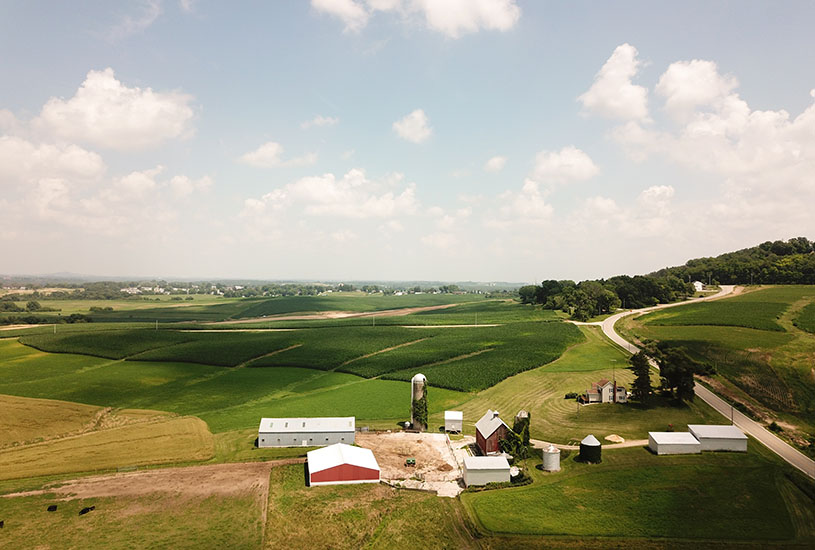Due to multiple and complex factors, including reduced resources and research in rural and remote areas, many people are at an increased risk of dying from heart disease in rural areas of Australia.
Rural communities experience increased challenges when it comes to achieving optimal heart health when compared to their metropolitan cousins.
Due to geographical challenges, rural Australians don’t have the same access to health care and emergency services as their metro counterparts and data shows that rural Australians are at a higher risk of heart disease.
Dr Laura Alston from the Institute for Health Transformation chose to study rural heart health for her PhD.
“There is a gap in the literature around why rural heart health is poor, which is why I decided to research it for my PhD.
“There isn’t enough research around the role of risk factors, such as differences in diet, physical activity and other lifestyle factors in the gap between metro and rural areas.”

Dr Alston, who is from rural Victoria herself, explains, “Although rural health services are doing the best job they can, we don’t have the same access to healthcare and the statistics say that rural people don’t visit their GP as much as often as those in the city do.
“We also don’t have as readily available access to specialists, GPs and allied health professionals.”
The added risk factors
Dr Alston explains that, “research on the role of risk factors and the gap between metropolitan and rural areas across Australia showed that around 38 percent of the gap was due to differences in risk factors between the two groups.”
This added risk is attributed to the differences in diet, exercise, obesity, alcohol consumption and smoking. However, this isn’t the only reason for poorer heart health in remote areas.
“There is still more than 60 percent of the gap that was not as a result of behavioural risk factors.
“It is most likely to do with access to healthcare services, geographical barriers to prompt emergency service responses and other unmeasured factors like stress, air pollution and mental health.”
For example, people living in rural areas, such as on farms don’t usually have access to defibrillators that can save a life while waiting for emergency services to arrive.
This can make living on a farm deadly if you were to suffer from a sudden heart attack.

“If you had a heart attack in an office block you would more likely have access to a defibrillator nearby,” Dr Alston says.
In addition to the challenges rural communities face, there is a lack of research in rural areas, in comparison to the health needs of these communities.
“In Australia there was a study by Barclay et al, on NHMRC funding and there isn’t much funding going to those in rural communities in comparison to metropolitan areas and this inequality has existed for a long time,” explains Dr Alston.
This translates to less scientific evidence and data in rural areas, compared to their metropolitan counterparts, which means less information to inform the solutions, policies, interventions and future research.
How can this be prevented?
Aiming for the dietary guidelines, managing stress, and exercising regularly are the usual ways to prevent heart disease, and also remembering to visit your local GP often.
“There is an attitude of ‘she’ll be right mate’ that often comes with living in remote and rural areas, and this may be increasing many people’s risk,” explains Dr Alston.
For example, if a patient has high cholesterol or high blood pressure they really need to ask their GP for referrals to specialists.
However the data tells us that GPs in rural areas are often stretched and can’t give out the amount of advice they would like to as there is a very high demand for them in remote areas.

“People in rural areas can advocate for change within their local government. For example, advocating for change in our environment such as better access to walking tracks and healthy food,” says Dr Alston.
“There simply isn’t enough research and advocacy in this area.”
What is the risk for other diseases?
The total burden of disease is around 40 percent higher in rural areas if you live outside of a major city.
It can be up to 70 percent higher in really remote areas.
“The five year survival rate for cancers goes down the more remote you are. Later diagnosis rates happen in the more remote areas, which is a very sad statistic,” says Dr Alston.
How can we help?
Health services are a big resource to their community and are in high demand. The staff are often under a lot of pressure due to staffing and funding issues.
However, “with enhancements in internet coverage and technology there are e-health advancements, which have opened up the health resources a bit more for both health professionals and patients,” explains Dr Alston.

“We clearly need more research to assist with improving the health of people in rural and remote areas of Australia.
“Investment is especially needed for prevention initiatives, so we can work towards improving the health of the current generation but also the generations to come.”



